Madame B is a Tea & Pancakes House in Bucharest, Romania. At the acquisition of the business by the new shareholders, we were contracted to carry out the branding and digital marketing for this concept, and by the end of August, after only two months of promotion, the business was brought to profit. ONLY 2 MONTHS!
How did we do that?
Before starting the analysis of how we approached Madame B project, we have to mention that we initially performed a preliminary analysis of the market on which the brand operates in Bucharest: we performed the SWOT analysis, the PEST analysis, and clarified the position of the brand on the reference market.
Therefore, we have established who are the direct and indirect competitors and have foreseen the market trends, the marketing opportunities, but also the possible commercial threats for the brand. Also, we have classified the coffee & tea shops and the pancake houses in Bucharest according to the advantages that the potential clients are looking for when they go out.
Rebranding Madame B concept
Of course, consumers have more confidence in a well-known brand, getting to feel more comfortable, repeating the interaction they first had, forming a closer connection between the brand and the consumer.
From rethinking the name, logo, packaging, ads, and marketing strategy, the purpose of the rebranding campaign in the case of Madame B was to change for higher the consumers’ perception of the products and services offered.
Following a well-thought-out strategy, we concluded that by rebranding Madame B’s products and the whole concept, we will create a different identity for the brand. Thus, the logo and the identification elements, including the website, have been rethought and placed on a modern basis, resulting from the mentioned marketing studies.
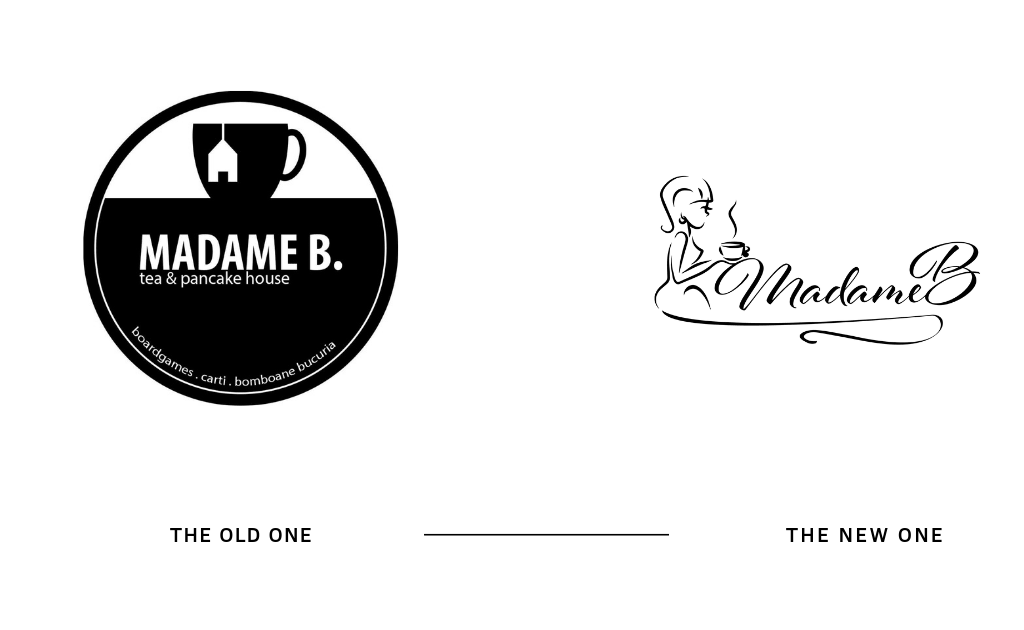
The logo is one of the most important tools of visual identity. The whole identity of the brand is concentrated in this graphic representation.
Qualitative market research
1. Title of the research
Study on the perception of the target audience on the Madame B. brand image
2. The research problem
Madame B’s reputation was not the best of all. This was largely due to the lack of a well-defined brand image: the lack of promotion to highlight the unique concept of the bar and the benefits offered have led to confusion among potential customers.
The decision-making problem was given by the adoption of a communication style that would attract the target audience. The research problem was represented by the identification of the existing perceptions about the bar.
3. Purpose and objectives of the research
The purpose of the research was to identify the existing perceptions of the target audience regarding Madame B.
The research objectives were to identify the reasons for buying and consuming the pancakes; what is associated with the consumption of pancakes; identifying expectations that the target audience has from a laundry/tea shop.
4. Research method
In our research, we conducted a focus group, a qualitative research method that consists of a discussion on a particular topic with a group of people belonging to the reference market. The reason why we chose this research method is that it allows us to find conclusive information regarding the participants’ perception of the consumption of pancakes, but also on the Madame B brand.
Objectives, strategies, decisions of integrated marketing communication
Promotional plan
The purpose of the campaign comes from the identified decision problem. This consisted of promoting Madame B tea shop to the segment of the population aged 18 to 26 years. The campaign is still ongoing at the moment.
Identifying and targeting the right audiences
Starting from quantitative research, where the instrument used was the questionnaire, we concluded that the main segment to which Madame B should address are the persons between the ages of 18-26 years.
Thus, the entire communication campaign was aimed at young people; therefore, the target audience within the integrated marketing communication campaign includes people between the ages of 18 and 26, women in particular, who are interested in pancakes/crepes. This category includes students, but also employees, people working in the corporate environment, entrepreneurs, or freelancers. They have a habit of going out with friends and especially on weekends. In addition, they are active on social sites, the most used being Facebook.
Customer Journey Maps
Customer journey is the sequential process (and all experiences of the process stages) through which customers/consumers/users (in specific terms digital media) move from point A, from start, to point B, from the end, to achieve a goal. Viewing this process in a graphic form is called the customer journey. In other words, the customer journey shows, both descriptively and visually, the story of the entire customer experience in relation to a product/ brand.
With a measurable character, digital media allow the monitoring and measurement of these processes and, therefore, understanding a customer journey is a good practice in making digital marketing plans, as well as in carrying out communication campaigns using digital tools.
In short, a map of the client’s route is made to understand the process through which the client goes to influence him. Thus, to create the map, we followed the following steps:
- Targeting the target audience;
- Choosing a representative of a segment from the public to describe their experience;
- Defining the purpose that this representative wants to achieve;
- The step-by-step description of the experience through which the segment representative passes to achieve the purpose he pursues.
Unique selling proposition – USP
In terms of brand positioning, the point of difference is a product attribute. Thus, we chose ‘the most delicious pancakes’ as the USP for Madame B. This attribute resulted from the reviews of the restaurant’s customers, who mentioned, beyond the excellent plating, that the products were delicious. This was also evidenced by the reviews the restaurant received during the study.
Another aspect we wanted to highlight is the variety – Madame B offers a wide range of pancakes, with different flavors, from savory pancakes to salmon to sweet pancakes with Kinder Bueno or Oreo. Being aware of the competition in the field, Madame B wants to offer more than just a slice of pancakes – Madame B offers a new customer experience.
The objectives of the digital campaign
We noticed that the potential Madame B customers were confused about the whole concept of the restaurant. Teahouse? Cafe? Restaurant? Pancake house? It was compulsory to integrate all these concepts into one, so we have chosen Tea & Pancake House.
In addition, our digital strategy pillar was that Madame B needs to increase notoriety, especially within that segment of the target audience she is associated with.
The objectives of the campaign represent the steps we are taking to reach the goal. These are the reactions we expect from the target audience, which is why they have been formulated as specifically as they can be measured and evaluated at the end of the campaign.
1. Informing 250,000 people from the target audience about the concept and offers of the bar, by the end of the campaign.
2. Getting the customer loyalty of 2500 people by the end of the campaign, to form a community around the brand. Loyalty should be defined as “returning at least once a month to the location”.
3. Creating brand awareness to determine profile magazines, communication platforms, and social media influencers to create content writing around the brand.
Choosing the communication strategy
As part of the promotion campaign, we will focus on several strategic pillars to reach our set goals. They will be used for the main purpose of increasing Madame B’s reputation and, therefore, attracting new customers and retaining existing ones.
Advertising is the paid and impersonal communication with the market. It is impersonal because the message is transmitted to the audience by an object and not by a person. It is also paid as the broadcasters are paid to do so.
We chose this component of the communication mix because it is necessary to achieve the goal of increasing awareness.
Since we are targeting a young audience who does not watch TV much longer, we will use as media channels the social networks (Facebook, Instagram) and the new website that has been created for the restaurant. The publicity will thus be able to reach a mass audience within the target audience. Specifically, we used advertising as follows:
- we have created the new website, which includes information about the restaurant and its specifics, about the menu, as well as a blog section, where curiosities or trends in the field are posted periodically, but also details about Madame B. events.
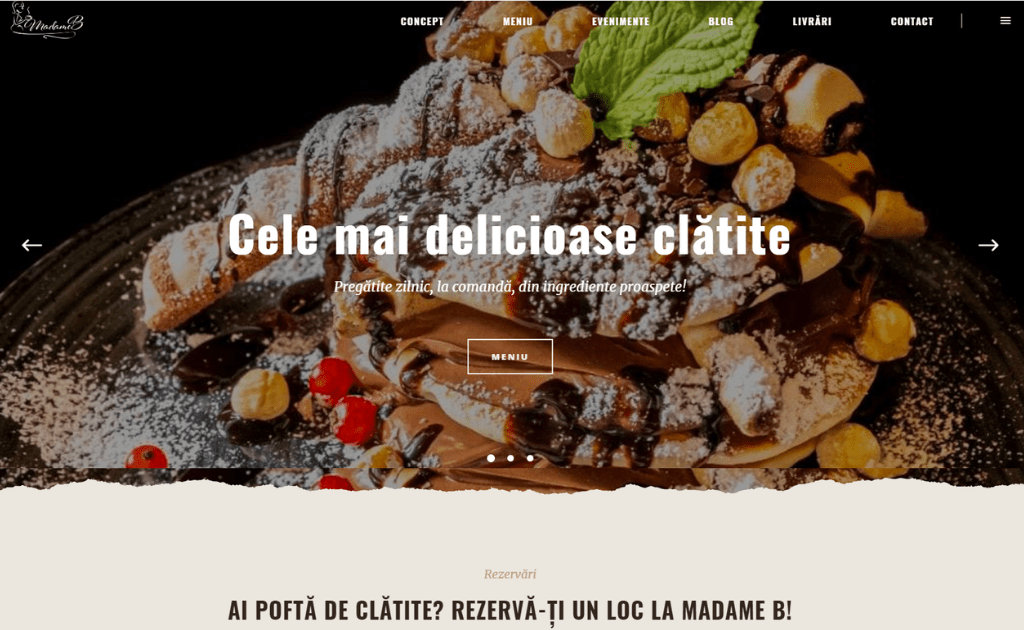
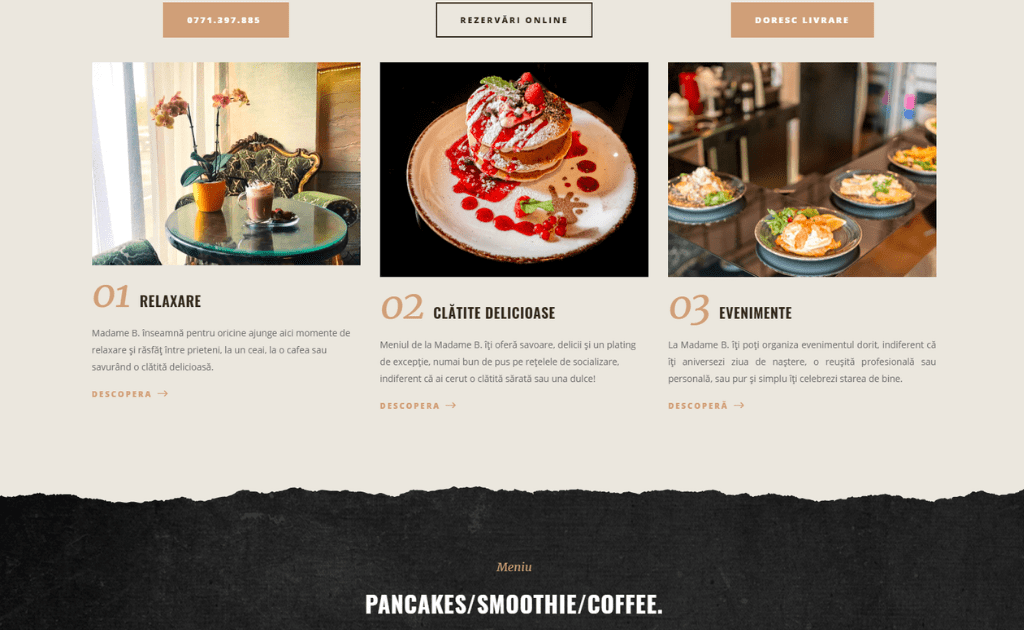
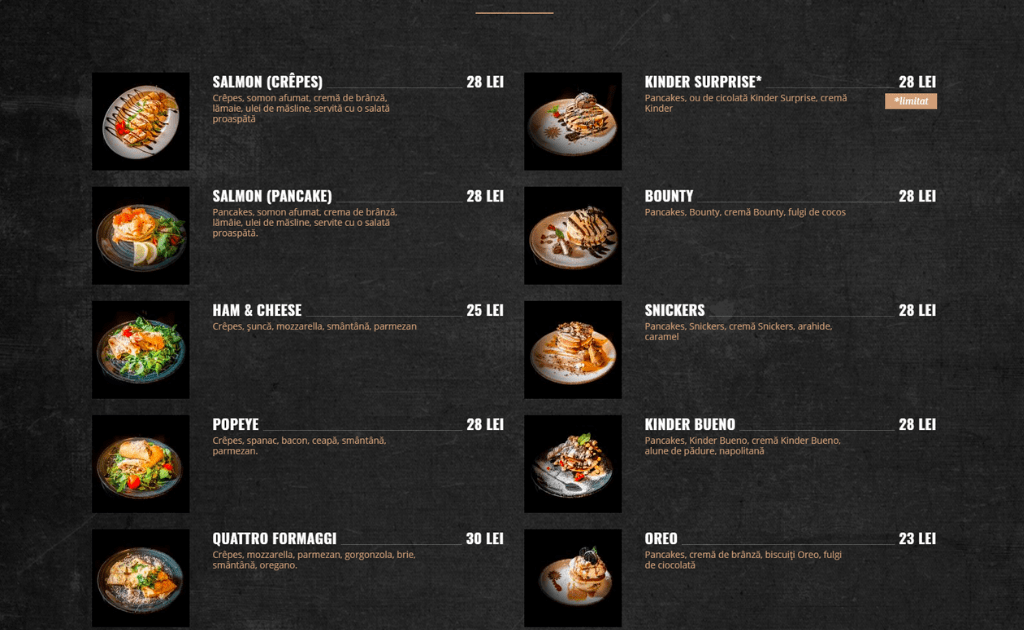
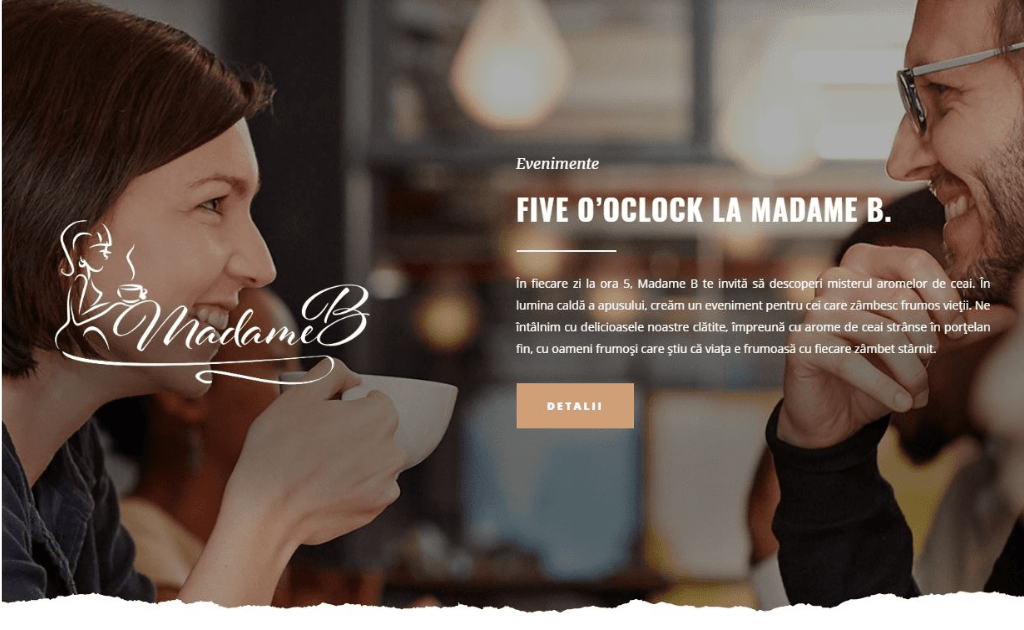
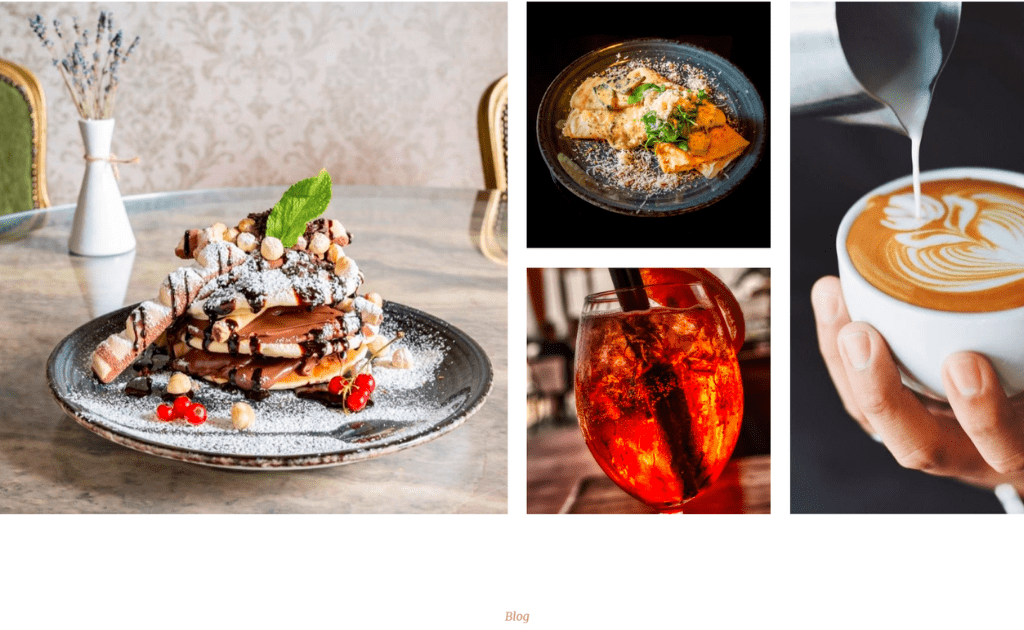
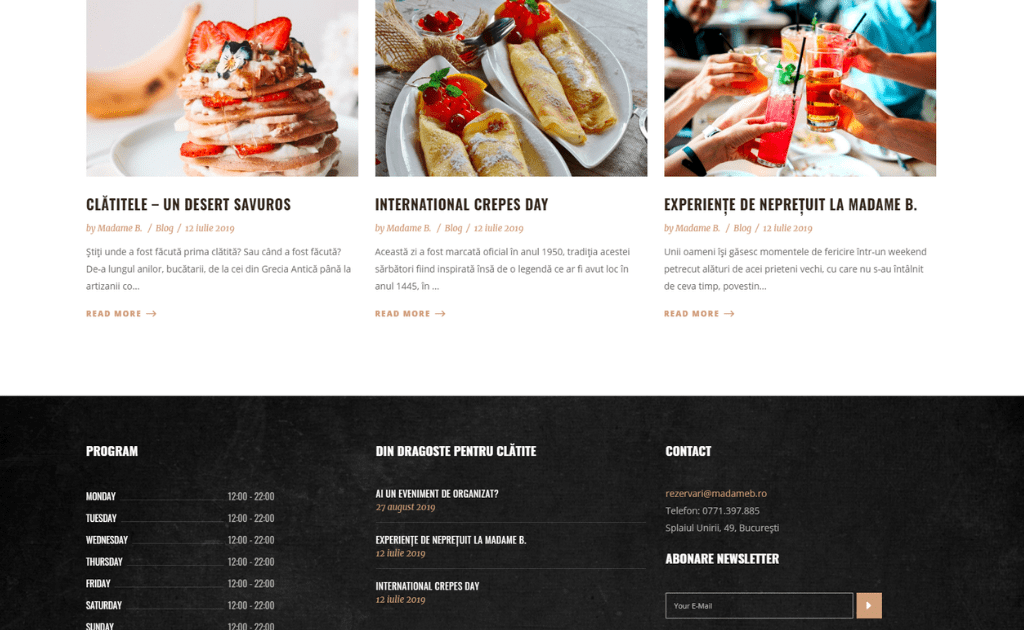
- we have created an Instagram page where high-quality photos are posted with the preparations, the customers, the short videos, and other images that give the atmosphere inside the restaurant.
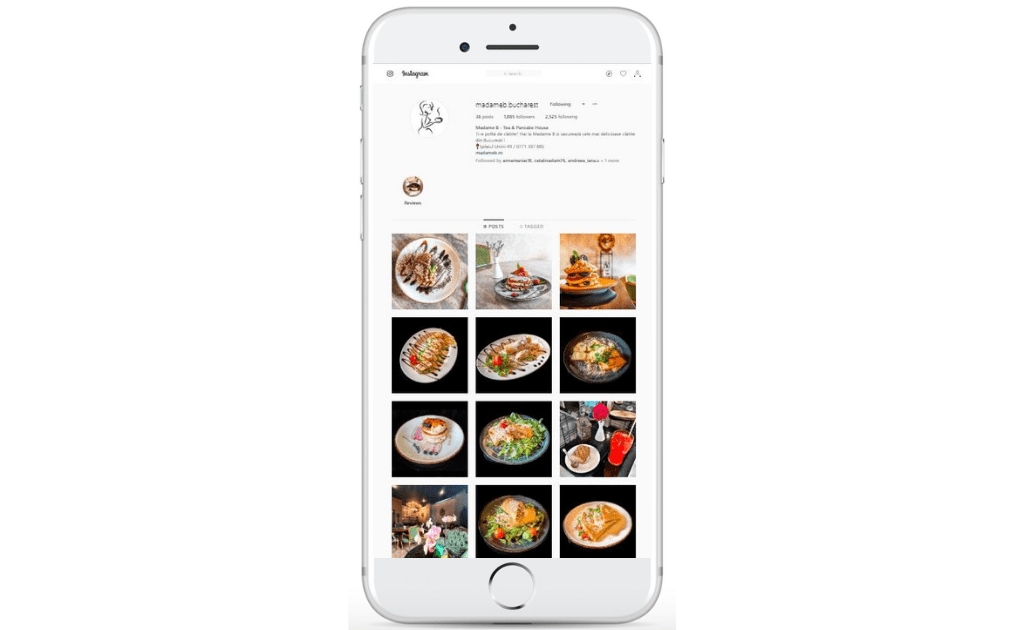
- the Facebook page is constantly updated and information about products, promotions, and future events is posted regularly. We also used Facebook Ads to promote the Facebook page and site.
Offline, we placed two banners at the entrance to the restaurant to draw attention to the restaurant. Also, stylized flyers with Madame B’s brand identity were created.
Choosing the media strategy
1. Conventional environments (ATL)
- The placement of two banners (the banners illustrate Madame B’s preparations) at the entrance of the restaurant to attract the attention of the passers-by regarding the premises.
2. Unconventional environments (BTL)
- Creation of stylized flyers, representing an effective way to increase brand awareness.
3. Online environment (TTL)
- Creating and managing the official Madame B website with a special section for the blog, where we will regularly post curiosities about products and articles about what has happened or is about to happen to Madame B. At least one article will be posted each week, throughout the campaign;
- Using Facebook Ads throughout the campaign, promoting the page itself and the promotions that will take place during the campaign.
The digital campaign is ongoing. Yet, in less than 2 months, the owner of the restaurant told us she is already on profit.
We will continue working on this project and we will update this case study by the end of this year with the evolution of implementing the strategy, statistics, and analytics of the digital project.
